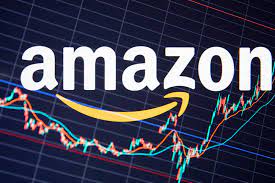Fintechzoom Amazon Stock: In today’s ever-changing financial landscape, understanding stock performance is crucial for investors looking to make informed decisions. Among the numerous options available, many have turned their attention to Fintechzoom’s Amazon stock. The e-commerce giant has consistently shown strong performance and growth, drawing both individual and institutional investors. However, analyzing the current trends and potential future movements in Fintechzoom Amazon stock can be daunting. This article aims to break down the latest market trends, provide insights into recent Fintechzoom Amazon stock news, and offer an analysis that can aid your investment strategy. By exploring various aspects of Fintechzoom Amazon stock, investors can better assess whether now is the right time to invest or hold onto their shares.

- Overview of Amazon fintechzoom Amazon stock price trends.
- There have been recent updates and developments in the news about Amazon stocks.
- We provide insights into Amazon stock analysis and future forecasts.
Amazon Stock Price
The impact of E-Commerce growth on Amazon’s stock performance is significant.
In recent years, the expansion of e-commerce has fundamentally reshaped consumer behavior, dramatically affecting the stock performance of key players in the market. Amazon, as a pioneer in this sphere, has seen both its share price and overall market reputation fluctuate significantly in response to broader trends within the digital retail landscape. But what exactly has driven these changes in Amazon’s stock performance?
Understanding e-commerce dynamics
The surge in online shopping, exacerbated by the pandemic, has undoubtedly propelled e-commerce into the limelight. More consumers turned to digital platforms for their purchasing needs, and Amazon has been at the forefront throughout this transformation. Yet, it’s essential to recognize that growth in e-commerce isn’t just limited to an increase in revenue for Amazon. It also raises various questions about competition, market saturation, and consumer trust.
- Competitive Landscape: As more businesses embrace digital sales channels, Amazon faces increased competition from both established retailers and emerging startups. This rising competition can lead to price wars and an erosion of profit margins, which might impact investor sentiment and perception of Amazon’s stock.
- Consumer Behavior: The pandemic shifted consumer habits, with many shoppers now favoring online purchases over traditional retail. Although this is generally positive for Amazon, customer loyalty remains fickle. As new platforms emerge, retaining a loyal customer base becomes paramount for sustained growth.
- Technological Innovations: The growth of e-commerce also calls for continuous innovation. Amazon constantly updates its technology and infrastructure to enhance the user experience. However, increased spending on technology can also lead to short-term dips in stock performance, raising questions about long-term profitability.
Navigating stock analysis
When we analyze Amazon’s stock, we see a complex interplay of e-commerce growth and market expectations. The excitement around digital sales often translates into a higher valuation for Amazon stock, leading investors to contemplate whether now is the right time to buy Amazon stock. But is that enthusiasm warranted? Many analysts argue it’s a matter of perspective.
For instance, while some investors relish the opportunity, others caution against the volatility that comes with a tech-heavy stock. After all, occasional downturns can arise from market corrections or economic uncertainties. Moreover, the very nature of e-commerce is unpredictable. Trends shift quickly, and changes in consumer sentiment can have an abrupt impact on stock prices.
Looking Ahead
As we look to the future, the question remains: how will ongoing e-commerce growth play out for Amazon’s stock? While optimism abounds, especially given the rise of online shopping, it’s prudent for investors to stay informed and vigilant. The future holds significant potential, but it also carries risks that require careful consideration.
In conclusion, the impact of e-commerce growth on Amazon’s stock performance illustrates a fascinating narrative of opportunity mixed with uncertainty. The interplay of competition, consumer habits, and technological advancements makes this a dynamic and captivating sector to watch.
html
Analyzing Amazon’s Financial Metrics: Key Indicators for Investors
For anyone actively navigating the intricacies of the stock market, understanding Amazon’s financial metrics is crucial. This tech giant, as one of the world’s largest e-commerce players, presents a conundrum for investors. Balancing profitability with growth can be challenging. Therefore, we must explore key indicators that can illuminate Amazon’s financial health and performance.
Revenue Growth: The Power of Scale
Amazon’s revenue has consistently shown impressive growth trajectories over the years. The company’s ability to expand its product offerings while improving its logistics network positions it strongly against competitors. However, one might wonder: how sustainable is this growth? On one hand, market expansion into areas like cloud computing and entertainment appears promising. On the other hand, economic uncertainties could stifle this upward trend. Nevertheless, a close examination of Amazon’s stock performance reveals vast potential.
Profit Margins: The Balancing Act
While revenue growth captures attention, profit margins warrant equal scrutiny. Amazon operates on thin margins, largely due to its vast investments in technology and infrastructure. This leads to a paradox: high sales don’t always translate to equally high profits. The question arises: can Amazon maintain profitability in a landscape that demands constant innovation? Investors often grapple with this uncertainty. The whirlwind of sales figures and market share can easily overwhelm investors. Understanding the implications of profit margins, on the other hand, can provide more clarity.
Debt Levels: A Double-Edged Sword
When examining Amazon’s financial stability, one cannot overlook its debt levels. A higher debt-to-equity ratio might raise alarms among cautious investors. However, when it comes to ambitious growth strategies, leveraging can be a double-edged sword. Basing decisions solely on debt factors could cloud judgment. It is critical to examine the impact of these levels on cash flow. This introduces another layer of complexity. One must consider how effectively Amazon manages its debt as it continues to invest in future growth.
The Invisible Force: market sentiment
Investor sentiment also plays a pivotal role in shaping stock prices. News surrounding Amazon can sway stock performance dramatically, often independent of tangible financial metrics. For instance, an announcement regarding new technological advancements can spark investor enthusiasm, pushing prices higher despite underlying financial setups. In this sense, gatekeeping financial data becomes vital for potential investors. To make informed decisions, they must navigate through the noise and effectively interpret Amazon stock news.
Conclusion: Making Sense of the Numbers
Investing in Amazon is not simply a numbers game; it’s about understanding the interplay of numerous financial metrics and market dynamics. When evaluating elements such as revenue growth, profit margins, and debt levels, one must also account for external factors. This combination shapes the narrative around Amazon’s stock and fundamentally influences its stock forecast. Ultimately, approaching these metrics with a critical eye will aid investors in deciphering Amazon’s complex financial landscape.
Amazon’s Competitive Landscape: How It Affects Stock Valuation
When analyzing Amazon’s stock valuation, one must first consider the competitive landscape in which this giant operates. It’s not just about numbers on a balance sheet or the last quarter’s performance. The intricacies of market dynamics, customer preferences, and technological advancements play a pivotal role. Moreover, the interplay between strong competitors can ripple through the stock market, causing fluctuations that might baffle even seasoned investors.
The role of competition in stock valuation is important to consider.
Amazon, a behemoth in e-commerce and cloud computing, faces stiff competition from various players. Companies like Walmart and Alibaba are not just minor competitors; they challenge Amazon on multiple fronts, each with its strengths. Understanding how these rivalries develop can reveal the hidden truths behind stock price movements. For instance, when Walmart announces a new strategy to enhance its online services, it often sends shockwaves through Amazon’s stock price, even if the impact seems distant.
Investors often grapple with how these competitive shifts translate into market trends that affect Amazon’s valuation. It isn’t simply about sales figures; it’s also about perception and anticipation. Shareholders may react swiftly to news or rumors—sometimes overreacting—concerning Amazon’s competitors. This reaction creates a feedback loop where stock prices fluctuate not just based on Amazon’s performance but also on the perceived threats from its competitors.
The Impact of Market Sentiment
Additionally, market sentiment plays a crucial role in how investors value Amazon’s stock. Stock market trends often appear disconnected from reality. For example, when Amazon announces significant growth in its cloud services, its stock may still dip if analysts project pessimistic growth rates for the retail sector. Investors, in this sense, rely more on psychology than on the hard data we might expect them to embrace.
Furthermore, consider technological advancements. Innovations that competitors introduce can disrupt not just their operations but also how investors perceive Amazon’s future. If a startup develops a revolutionary delivery system, it could position itself as a formidable rival, thus prompting existing investors to reassess their valuations based on potential market share losses. In essence, the competitive landscape continuously reshapes the narrative, keeping stakeholders on high alert.
Conclusion: The cyclical nature of competition and valuation
In closing, the relationship between Amazon’s competitive landscape and its stock valuation remains complex—almost enigmatic at times. The variables at play are numerous, and the interactions between competitors often complicate matters further. While it may seem daunting, embracing this complexity can ultimately yield richer insights into investing directions. As investors navigate these waters, it’s essential to remember that every competitive move could be an insightful indicator, subtly hinting at what lies ahead for one of the largest companies in the world.

The role of AWS in driving Amazon’s stock price is significant.
Amazon Web Services (AWS) has undeniably emerged as a cornerstone in shaping not only Amazon’s operational strategy but also its stock price trajectory. The significance of AWS extends beyond mere revenue generation; it amplifies Amazon’s position in the highly competitive tech landscape. As digital transformation becomes a necessity for businesses today, AWS is at the forefront, facilitating this shift.
Understanding the Financial Impact
One cannot overlook the financial implications of AWS for Amazon’s overall performance. The cloud computing segment contributes a substantial portion of Amazon’s profits. Here are a few key factors that illustrate this relationship:
- Revenue Growth: AWS has consistently reported significant growth rates year-over-year, often outpacing Amazon’s traditional retail business. This growth spurs investor confidence, which, in turn, can lead to increased stock prices.
- Profit Margins: Unlike Amazon’s retail division, which typically operates on thinner margins, AWS offers higher profit margins. This profitability enhances the company’s overall financial health, making it more attractive to investors.
- Market Leadership: AWS retains a commanding share of the cloud infrastructure market. Its dominance reassures investors about Amazon’s long-term prospects, thereby influencing the stock positively.
The Strategic Advantage of AWS
Moreover, AWS plays a pivotal role in building Amazon’s competitive edge. The platform enables businesses to leverage advanced technologies, such as artificial intelligence and machine learning, which are crucial in today’s digital economy. However, it is not merely the technological capabilities that drive Amazon’s stock price; it’s also about the perception of innovation and future potential.
The investor’s perspective
From an investor’s viewpoint, the performance of AWS can be a double-edged sword. On the one hand, robust AWS performance typically leads to stock price appreciation. Yet, reliance on this segment introduces volatility. Market analysts often scrutinize quarterly AWS reports for indications of growth or decline, which can create fluctuations in Amazon’s stock price.
Consequently, while AWS is a powerful asset for Amazon, it is essential to remain aware of the inherent risks associated with over-dependence on any single revenue stream. The tech landscape continues to evolve, and so do the needs and expectations of consumers.
Conclusion
In summary, AWS serves as a significant driver of Amazon’s stock price, contributing both to its revenue streams and overall market position. As businesses worldwide continue to pivot towards cloud solutions, the importance of AWS is likely to grow, reinforcing its role within Amazon and impacting investor sentiment. Thus, understanding the dynamics at play is crucial not only for investors but also for anyone observing the ever-evolving narrative of Amazon’s journey.
html
Market Reactions to Amazon’s Earnings Reports: A Historical Overview
Amazon, one of the most influential and transformative companies in the world, consistently captures the attention of investors and market analysts alike. Each quarter, as the cloud of anticipation builds around its earnings reports, the subsequent market reactions often reveal much more than just the fiscal performance of the company. They encapsulate a broader sentiment and often serve as a litmus test for the retail and technology sectors.
The initial shock and awe
Exhilaration and trepidation have traditionally greeted Amazon’s earnings. For example, when the company first announced its foray into cloud computing with AWS, the immediate market reaction was a resounding positive affirmation. Analysts and stakeholders marveled at how, for the first time, Amazon was not solely a retail giant but a serious player in the tech arena. However, a phase of skepticism followed this. Investors often found themselves asking if this new direction was sustainable or just a temporary trend.
Fluctuating Fortunes
As the years rolled on, the responses to Amazon’s earnings reports began to display a pattern of volatility. Particularly during periods of economic downturn or heightened competition, a seemingly minor miss in earnings could trigger significant sell-offs. For instance, during the onset of the pandemic, the market reacted with uncharacteristic calmness to Amazon’s earnings. Surprisingly, many expected soaring numbers due to the shift toward online shopping, yet even positive results did not guarantee an upward trajectory of the stock price. Investors felt cautious, likely due to a combination of high expectations and the unpredictability that subsequent quarters might bring.
The Role of Analysts and Expectations
When discussing these reactions, it’s crucial to understand the dynamics laid out by market analysts. Analysts’ predictions often act like a beacon for market sentiment. When these expectations surpass expectations, the market experiences euphoria. On the other hand, if the estimates fall short, it can trigger a surge of anxiety, irrespective of the precise figures. Perhaps therein lies the crux of market behavior when it comes to Amazon: it’s not solely about the figures themselves, but more about the emotions and narratives shaped around them. This elucidates why stocks, despite robust earnings, may experience a significant decline if the guidance for future quarters raises uncertainties.
Recent Trends and Future Implications
In analyzing recent earnings reports, a marked trend emerges. The market seems to react with a blend of both caution and intrigue. Investors now appear more discerning, assessing not just the bottom line but also the long-term vision articulated by Amazon’s leadership. Indeed, as the company continues to diversify—delving into areas like entertainment and grocery—how the market responds to these quarterly revelations offers invaluable insight into investor confidence.
Looking ahead, sentiment’s manipulable nature suggests a future filled with complexities. The interplay between earnings performance and market reactions will likely remain a delicate dance. As such, it is not merely a matter of tracking Amazon’s financial growth; it’s also about appreciating the connections that drive investor behavior.
In conclusion, understanding market reactions to Amazon’s earnings reports requires not only a grasp of financial data but also an appreciation for the emotional and psychological factors at play. The historical overview provides a lens through which we can better navigate the unpredictable landscape of stock market investments. After all, when it comes to Amazon, it is always more than just numbers. It reflects our collective hopes, fears, and expectations.
The Future of Amazon Stock: Predictions and Trends
As the digital landscape evolves, the future of Amazon stock has become a captivating subject for investors and market analysts alike. The company’s trajectory as a retail giant heavily influences not just e-commerce but, to a certain extent, the broader economy. However, predicting where Amazon’s stock will go entails navigating a complex web of factors, from technological advancements to shifting consumer behaviors.
Market Sentiment and Economic Indicators
Understanding market sentiment can often be akin to reading tea leaves—it’s not always straightforward. The overall economic climate heavily influences the stock’s performance, according to many analysts. For example, rising inflation or interest rates may have an impact on consumer spending and, consequently, Amazon’s profitability. The uncertain economic outlook has often led investors to adopt a more cautious approach, which might contribute to fluctuations in stock prices.
“Investing is not just about numbers; it’s about understanding the stories behind them.”
This quote reflects the sentiment that, while numbers are crucial, the narrative surrounding them holds equal weight. Furthermore, we continue to observe shifts in consumer behavior following the pandemic. People are more accustomed to online shopping than ever, fostering an environment where Amazon continues to thrive while also facing new challenges from competitors.
Technological innovations and a competitive landscape
Amazon’s commitment to innovation underpins its market presence. The expansion into artificial intelligence, cloud computing, and logistics optimization is transforming company operations daily. For instance, as Amazon Web Services (AWS) grows, it significantly bolsters the company’s revenue stream, but reliance on such services opens up potential vulnerabilities as competition intensifies.
The presence of formidable rivals, such as Walmart and new startups, further complicates investment decisions. It’s crucial to consider how these competitors adjust their strategies in response to Amazon’s moves. Although Amazon typically leads the charge, rapid changes in the marketplace can create scenarios where they must play catch-up. Such dynamics keep analysts on their toes, as sudden shifts can lead to unexpected volatility in stock performance.
Investor Strategy and Long-Term Outlook
Given the array of variables at play, developing a coherent investment strategy concerning Amazon stock is anything but simple. Many seasoned investors advocate a long-term perspective. They argue that while the stock may experience short-term fluctuations, the underlying fundamentals have the potential to yield substantial returns over time. Thus, knowing when to hold or explore other options is crucial to investing.
While some may feel tempted by immediate gains and quick shifts within the market, it’s essential to remember that the investment landscape is often more about patience than rapid returns. Perhaps it could be beneficial to diversify your portfolio, considering Amazon is part of a broader strategy rather than a singular focus. After all, long-term investment sustainability often leads to more satisfying outcomes.
In conclusion, while the future of Amazon stock presents numerous possibilities, it also embodies a host of uncertainties. As market trends continue to shift and evolve, discerning investors must remain adaptable and informed. Only time will tell how Amazon will navigate the challenges ahead, but its impact on the market is undeniably significant.
html
Investing Strategies for Fintechzoom Amazon Stock: Long-Term vs. Short-Term
In today’s dynamic market landscape, examining investment strategies for a giant like Amazon has undeniable relevance. Investors often find themselves at a crossroads, contemplating whether to adopt a long-term outlook or engage in short-term trading. Each approach offers unique benefits and challenges, necessitating a careful analysis before making any commitments. In this exploration, let’s delve into both strategies to illuminate the path for potential investors.
Long-Term Investing: A Foundation for Growth
Many seasoned investors advocate for a long-term approach, believing that patience often yields significant rewards. Amazon, with its diverse revenue streams, including e-commerce, cloud computing, and subscription services, presents a compelling case for long-term investment. Here are a few reasons this strategy might appeal to you:
- Compounding Returns: Holding onto Amazon stock for an extended period can leverage the power of compounding. This means that your initial investment has the potential to grow exponentially over time.
- Market Resilience: Amazon has shown remarkable resilience, navigating through various market fluctuations. Long-term investors often benefit from this stability.
- Diversification: Amazon’s diverse portfolio reduces risk. Even if one sector underperforms, others may offset losses, providing a buffer for long-term investors.
Short-Term Trading: Navigating the Waves
On the flip side, short-term trading can be enticing, reflecting the adrenaline rush that comes with swiftly changing market conditions. This strategy calls for astute observation of market trends and the ability to react promptly. Let’s explore some considerations for short-term traders:
- Market timing is critical in short-term trading. The ability to buy low and sell high within a brief window can lead to impressive profits, albeit with increased risk.
- Immediate Gains: Traders often realize quick returns. If you’re adept at predicting stock movement, this approach may suit your strategy.
- Flexibility: Short-term investing allows one to adapt quickly to market changes, harnessing opportunities that long-term investors might miss.
Choosing Your Path
Ultimately, the decision between a long-term versus short-term strategy hinges on your individual goals, risk tolerance, and market understanding. If you possess the vision to see beyond short-term fluctuations, a long-term investment in Amazon could yield substantial gains. Conversely, if you relish the thrill of trading and have a knack for analyzing market trends, short-term strategies might resonate more with your investing style.
In conclusion, both investing strategies have their merits. Amazon will undoubtedly remain a player to watch. It’s crucial to stay informed and prepared, regardless of whether you choose to buy and hold or trade actively. As the marketplace evolves, staying attuned to Amazon’s performance and industry dynamics will serve any investor well, regardless of their chosen path.
Factors Impacting Amazon’s Stock: Environmental, Social, and Governance (ESG)
In today’s financial landscape, the role of environmental, social, and governance (ESG) factors is increasingly crucial in shaping investor sentiment and company performance. For a massive corporation like Amazon, these elements represent both challenges and opportunities that can significantly influence its stock valuation.
Environmental Considerations
Starting with the environmental aspect, Amazon has made strides towards sustainability. The company pledged to reach net-zero carbon by 2040, which is a commendable goal. However, one cannot overlook the paradox of its operations. On one hand, Amazon invests in renewable energy projects; on the other hand, the logistics involved in its rapid delivery services raise legitimate concerns about carbon emissions. This duality can lead to investor uncertainty. How can one reconcile ambitious environmental goals with the reality of a global delivery network that relies heavily on fossil fuels?
Social Responsibility
The social factor in ESG is another complex layer. Amazon has often been in the spotlight regarding employee treatment and working conditions. Reports of high-pressure environments and worker dissatisfaction create a perception issue that could dissuade investors from prioritizing social responsibility. Nonetheless, Amazon’s initiatives to improve wages and benefits signal a commitment to change. Yet, this brings up an intriguing question: Can a corporation truly transform its culture while still maintaining its status as an e-commerce giant? Investors are betting on it, but skepticism remains.
Governance Structure
Lastly, the governance aspect of ESG concentrates on the management and control of a company. Amazon’s governance practices have come under scrutiny, especially concerning its board diversity and executive pay. While the company has taken steps to improve diversity, observers argue that progress remains insufficient. Furthermore, the compensation of top executives can spark outrage among those who believe it doesn’t reflect the company’s employee satisfaction metrics. Investors often wrestle with the question of whether they can trust a governance structure that might not align with their ethical standards.
The Investor’s Dilemma
For potential investors, navigating these ESG factors isn’t straightforward. On the one hand, Amazon’s commitment to adopting positive practices is commendable. On the other hand, the apparent conflicts between its operational model and its ESG aspirations can induce cognitive dissonance. Investors must weigh their values against the opportunity for financial gain. When a company’s stock price reflects both its financial health and its adherence to ESG principles, this can create a compelling yet perplexing scenario.
In conclusion, while Amazon postures itself as a leader in embracing ESG factors, the implications of these practices create a complex dialogue among investors. Understanding this landscape is crucial, but the path forward remains shrouded in questions and uncertainties, inviting both skepticism and hope. As the market evolves, so too will the conversation surrounding ESG—for better or worse.
The impact of global supply chain challenges on Amazon’s market value is significant.
In recent years, the landscape of global trade has transformed due to various disruptions, significantly affecting companies worldwide. Among these giants, Amazon stands out as a critical player, yet it is not immune to the rippling effects of supply chain challenges. Understanding how these issues influence market value provides valuable insights into the broader economic implications at play.
The Supply Chain Crisis Explained
Several interconnected factors contribute to global supply chain challenges. The COVID-19 pandemic was a pivotal moment, leading to factory shutdowns and reduced production capabilities. However, it didn’t stop there. Political tensions, fluctuating trade policies, and even natural disasters have compounded these struggles. The global logistics system struggled to cope, resulting in delays and increased costs. This chaotic backdrop makes it increasingly difficult for companies like Amazon to maintain their usual efficiency.
Amazon’s Response
Faced with these hurdles, Amazon implemented a series of strategic responses. They enhanced their logistics network and diversified their suppliers to mitigate risks. Furthermore, increasing their inventory levels took center stage, forcing them to rethink traditional just-in-time inventory models. This shift, while necessary for resilience, can sometimes tie up cash flow, influencing stock performance negatively.
Market Value Implications
The impact of these challenges on Amazon’s market value can be quite perplexing. On one hand, higher operational costs from disruptions can erode profit margins, leading to a decline in share prices. On the other hand, investments in infrastructure and technology often signal long-term growth potential, enticing investors. The question then arises: will the temporary dips overshadow the long-term gains? Public perception plays an essential role here. If consumers perceive Amazon’s reliability to wane, they might hesitate to invest, thereby slowing down market interest.
The bigger picture
To complicate matters further, the global supply chain is not just a narrative specific to Amazon. It reflects a broader economic phenomenon. Other retailers and industries are facing similar challenges, which can sway consumer choices and spending habits. Nevertheless, Amazon’s ability to adapt and innovate remains a focal point for analysis. As the company navigates these choppy waters, the decisions made today may pave the way for future resilience.
In conclusion, the impact of global supply chain challenges on Amazon’s market value illustrates a complex relationship intertwined with external pressures. While there are immediate consequences that can cause fluctuations, the long-term effects hinge on the company’s adaptability and consumer trust. As industry watchers, we must stay attuned to these developments, recognizing that the future is fraught with both uncertainties and opportunities.
The impact of technological advancements on Amazon’s stock trajectory is significant.
The evolution of technology plays a crucial role in determining the stock performance of major corporations, and Amazon is no exception. Over the years, Amazon has not only adapted to changing technological landscapes but has also often been a pioneer in reshaping them. Understanding how these technological advancements impact Amazon’s stock trajectory requires a closer look at several critical factors.
1. E-commerce and cloud computing
At the heart of Amazon’s business model lies its e-commerce platform. The rise of the online shopping industry has fueled growth, pushing Amazon’s stock further into the spotlight. But it isn’t just about product sales; it’s also about logistics and delivery systems. For instance, advancements in automation have streamlined operations, making deliveries faster and, ultimately, more profitable.
The success of Amazon Web Services (AWS) extends beyond e-commerce. AWS revolutionizes how businesses handle their operations in the cloud, essentially creating a new revenue stream for Amazon. This diversification has shielded Amazon from downturns in the retail sector. What’s noteworthy is how **cloud computing** has become a backbone for many startups, that rely on AWS to scale their operations with ease.
2. Artificial Intelligence and Personalization
Artificial intelligence is another game-changer for Amazon. Through sophisticated algorithms, Amazon enhances the user experience by providing personalized shopping recommendations. Studies have demonstrated that this approach boosts sales by encouraging customers to buy items that align with their preferences. However, it’s essential to recognize that while AI fosters sales growth, it also raises questions about data privacy and consumer trust, creating an intricate balance that Amazon must manage carefully.
- Machine Learning: This technology helps Amazon predict purchasing trends and optimize inventory management, ensuring that popular items are always available.
- Voice Assistants: Devices like the Amazon Echo have transformed how people shop. Voice-activated ordering systems not only enhance user convenience but also integrate seamlessly with their daily routines.
- Robotics in Warehousing: The utilization of robots in warehouses reduces operational costs and speeds up order fulfillment, influencing overall profitability.
3. Market Dynamics and Investor Sentiments
Finally, it’s crucial to consider how these technological innovations influence market dynamics and investor sentiments. A surge in technological advancements can lead to increased investor confidence, thereby pushing stock prices higher. Conversely, any setbacks or controversies surrounding new technology implementations could result in a downward shift. This duality fosters an environment where Amazon’s stock serves as a gauge of technological advancement and a mirror of the views of consumers and investors.
In essence, Amazon stands at the confluence of innovation and market perception. The company’s ability to harness technological changes while managing public and investor expectations is fundamental to its stock trajectory. We cannot yet predict how emerging technologies will further shape this dynamic, but one thing is certain: the surrounding technological landscape will undoubtedly shape Amazon’s future.
Frequently Asked Questions
What is Amazon’s current stock price?
You can find the current stock price of Amazon on various financial news websites or stock market apps.
Is Amazon a beneficial investment right now?
Investment decisions should be based on individual financial goals and market analysis. It’s advisable to consult a financial advisor.
How has Amazon’s stock performed over the last year?
You can analyze Amazon’s stock performance over the past year by looking at historical price charts and financial reports.
What factors influence Amazon’s stock price?
Factors include company earnings, market trends, economic conditions, and changes in consumer behavior.
How often does Amazon pay dividends?
As of now, Amazon does not pay dividends; instead, it reinvests its profits for growth.
What is Amazon’s market capitalization?
You can check Amazon’s market capitalization on stock market platforms, which reflects the company’s total market value.
What are the risks of investing in Amazon stock?
Risks include market volatility, regulatory challenges, competition, and dependency on consumer spending.
Can I buy Amazon stock directly from Amazon?
No, you can only buy Amazon stock through a stock brokerage or trading platform.
What is the ticker symbol for Amazon?
The ticker symbol for Amazon is AMZN.
How can I stay updated on Amazon’s stock news?
You can stay updated by visiting financial news websites, and investing apps, and following market analysts on social media.




















Comments 1